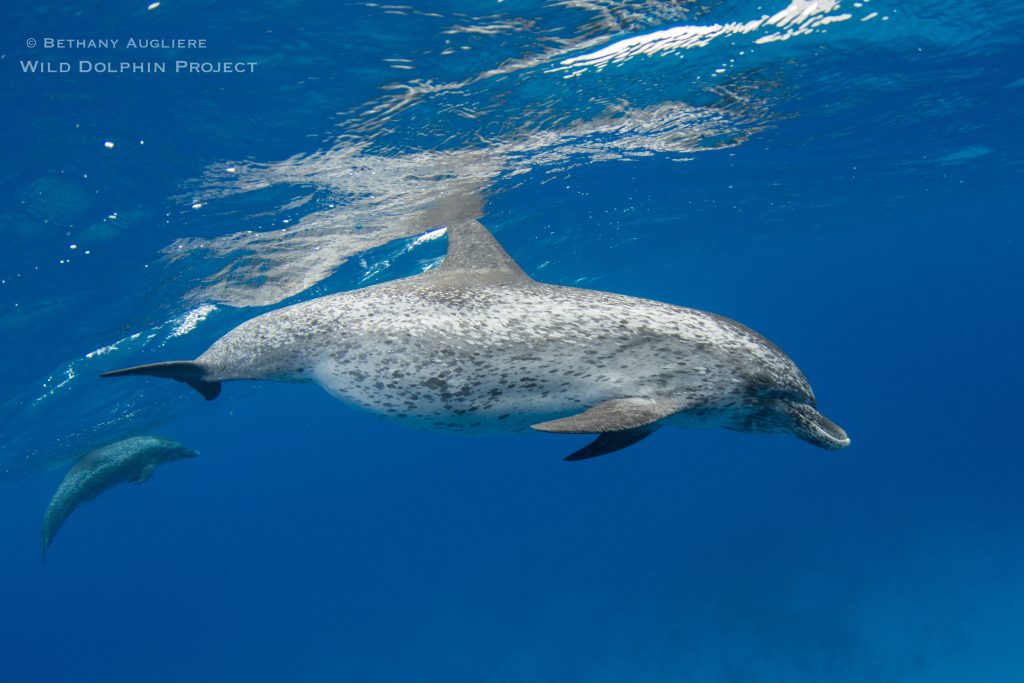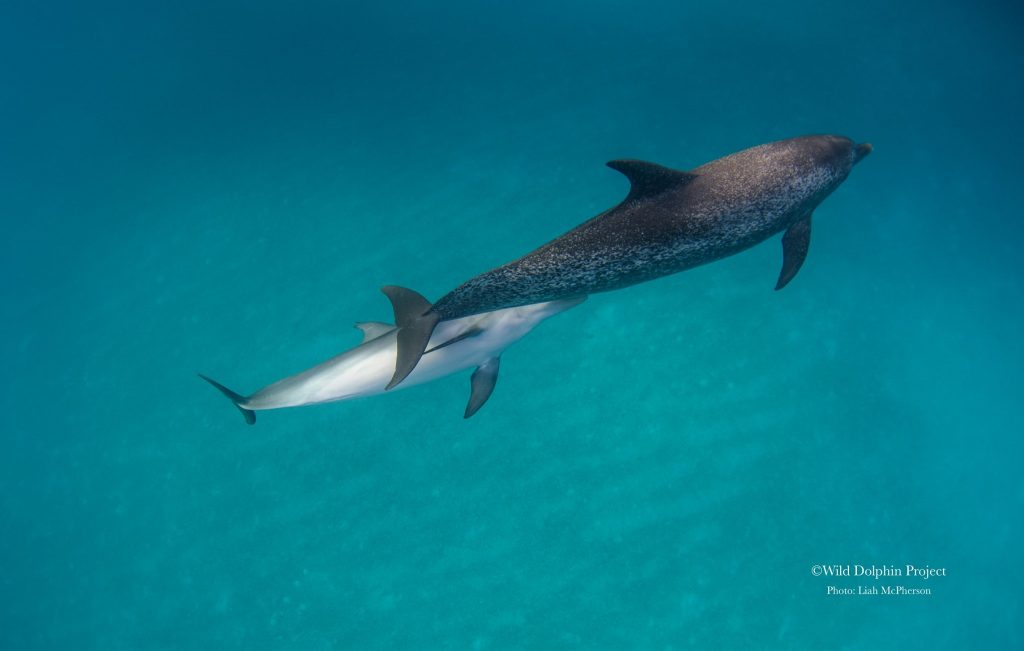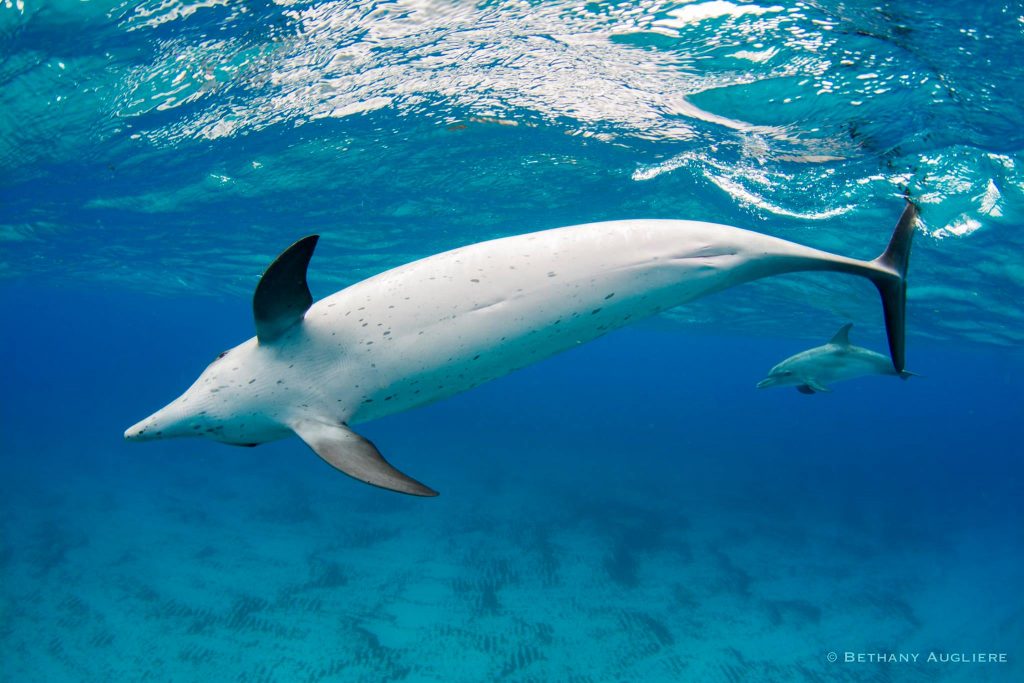
All summer long we observe wild dolphins in the Bahamas — and some of those dolphins are pregnant.
Based on long-term observation of individuals, Denise Herzing, founder and research director of the Wild Dolphin Project, determined that female Atlantic spotted dolphins have two peak calving seasons in early spring and late fall. So, just as our field season ends and we hunker down to get office work done, analyze our data and attend conferences, etc…the dolphins are giving birth.
Denise discovered that females begin to “show” around 6 months, which is about half the length of their entire pregnancy. So, based on the timing of when we first observe a pregnancy each field season, we can also estimate if the calf was a fall or spring birth. For instance, if we show up in May and can tell a female is pregnant and then by end of summer she is *very* pregnant, that calf will probably be born in the fall. Sometimes, they literally look as if they are going to pop! If, we don’t record a female as pregnant until the end of our field season because she is just starting to show, then that calf will likely be a spring baby.
It’s no surprise that when female dolphins get pregnant, they tend to slow down a bit too. Shawn Noren, of the University of California, at Santa Cruz, showed that pregnancy increases the drag on their body by up to 50%, compared to their slimmer non-pregnant selves. At least anecdotally, it does seem as though they move a bit slower when they are pregnant. In our study site, many times, groups of pregnant females travel together and the older males travel on the periphery, presumably to protect them. Also, as the babies take up more space, females have less flexibility, which they make up for by flicking their tail about 14% more often. When the dolphins are really pregnant, we often see the spotteds stretch and arch their bodies.
While exact age of sexual maturity of Atlantic spotted dolphins is unknown, we estimate that females probably reach sexual maturity around 10 years of age. We calculate that based on knowing when females are born, tracking them throughout their lifetimes, and noting when they first get pregnant.
The first dolphin Denise was able to monitor from birth to pregnancy was Katy, who was born in 1986, just one year after the project formally started. She became pregnant in 1995, though sadly lost that calf at some point during the 1996 field season, for unknown reasons. It’s possible the calf was taken by a predator, such as a tiger, bull or hammerhead shark, got lost, or had some kind of illness. On average, 25% of newborn dolphins die in their first year of life at our study site.
Baby dolphins are born floppy to help them exit their mom more easily during birth, and tail-first, so they receive oxygen as long as possible until they are born. Once they are born, they’ve got to learn to swim and get to the surface to take their first breath of fresh air- with mom’s help of course! Then, it’s time to nurse.

Photo by Liah McPherson.
Since dolphins are mammals, the calves nurse from their mothers for about 2-3 years to drink fatty milk to help them grow. They nurse by placing their beak into the mom’s mammary slits, which are down by the base of the fluke, and then form a cone with their tongue. The mom is actually in control of her let down — the release of milk — so none is lost to the water!

If you look closely, you can see the mammary slits on either side of the genital slit of this female dolphin. Photo by Bethany Augliere.
So far, nobody with the Wild Dolphin Project has ever seen a birth in the wild. Perhaps someday.
LEARN MORE:
To read more about this work, check out the scientific publication published by Dr. Denise Herzing, here.
To learn more about the Shawn Noren study, check out this article by Live Science.
